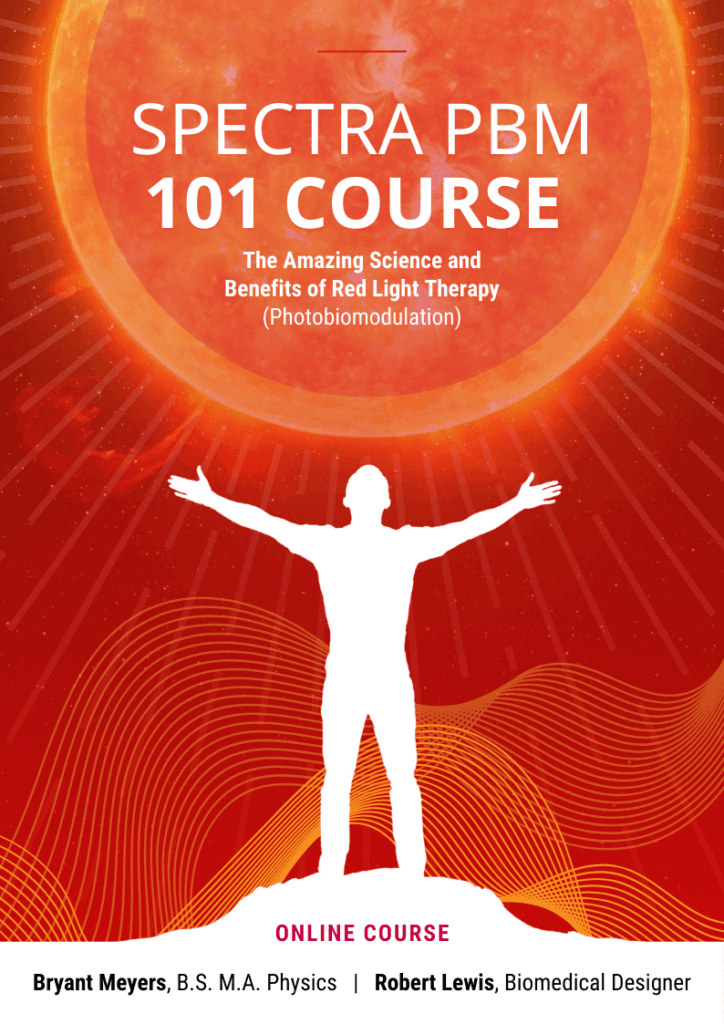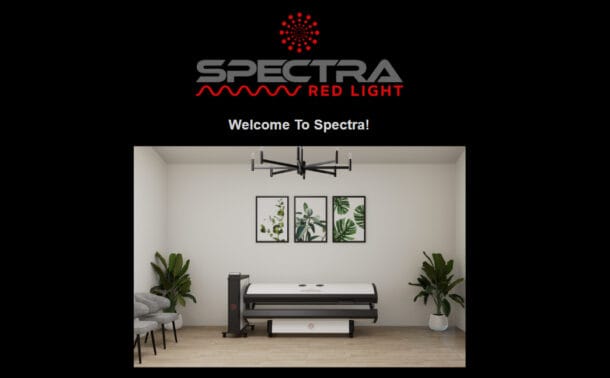According to a comprehensive meta-analysis published in Aging (2019), DNA methylation-based “epigenetic clocks”, which analyze methylation at specific CpG sites, are robust predictors of biological age, and accelerated epigenetic age is highly linked with increased mortality risk across diverse populations [1]. This finding highlights that biological age is not merely a reflection of chronological time but a dynamic marker of cellular health influenced by factors such as mitochondrial efficiency, oxidative stress, chronic inflammation, and epigenetic alterations. As interest in functional longevity grows, Red Light Therapy (RLT) has emerged as a scientifically validated modality capable of modulating these underlying aging mechanisms, offering a compelling approach to cellular rejuvenation and age reversal.
While traditional anti-aging efforts have focused on external appearance, true rejuvenation starts deeper, with your cells. Biological aging is driven by cumulative damage to DNA, dysfunction in mitochondrial energy production, chronic low-grade inflammation (also known as “inflammaging”), and impaired cellular signaling. These internal changes are what ultimately lead to visible aging, reduced tissue function, and increased susceptibility to age-related diseases.
By restoring mitochondrial function and modulating inflammatory pathways, RLT supports healthier cellular aging and may even contribute to reductions in biological age markers such as epigenetic alterations, telomere length, and systemic inflammation. It is not just about living longer, it’s about enhancing vitality, function, and resilience at every level of the body.
As science continues to uncover the profound link between light and longevity, Red Light Therapy is emerging as a pivotal tool in the quest to turn back the biological clock, safely, naturally, and effectively.
How Aging Begins: Cellular Stress, Mitochondrial Decline, and Immune Imbalance
Aging is more than just the passage of time; it’s a progressive decline in biological function driven by molecular and cellular damage. At the root of this process are several key mechanisms that accelerate biological aging, including mitochondrial dysfunction, oxidative stress, cellular senescence, and chronic immune dysregulation. Understanding how these processes unfold helps reveal how Red Light Therapy (RLT) can play a powerful role in slowing, or even reversing, age-related decline at its source.
One of the earliest and most critical changes in aging cells is the decline in mitochondrial function. Mitochondria are the powerhouses of the cell, responsible for generating ATP, the energy currency that fuels nearly every biological process. As we age, mitochondrial efficiency decreases, leading to diminished ATP production and an increase in reactive oxygen species (ROS), unstable molecules that damage DNA, proteins, and lipids. This oxidative stress contributes to cellular damage, impairs tissue regeneration, and accelerates aging.
Alongside mitochondrial decline, the body also accumulates senescent cells, cells that have stopped dividing but do not undergo apoptosis (programmed cell death). Instead, they remain in tissues and release a pro-inflammatory cocktail of cytokines, chemokines, and proteases known as the senescence-associated secretory phenotype (SASP). This chronic, low-grade inflammation, often referred to as “inflammaging,” disrupts healthy cellular communication and impairs tissue function across organ systems.
The immune system is also deeply affected by aging. Over time, it experiences immunosenescence, a reduction in the function of both the innate and adaptive immune responses. This results in decreased surveillance for pathogens and abnormal cells, impaired tissue repair, and increased vulnerability to infections, cancer, and autoimmune conditions. Chronic inflammation further weakens immune efficiency, creating a feedback loop that accelerates biological aging.
Red Light Therapy interrupts these age-promoting processes at multiple levels. By stimulating cytochrome c oxidase in the mitochondrial respiratory chain, RLT enhances ATP synthesis, restores mitochondrial membrane potential, and reduces ROS production. This not only re-energizes the cell but also reduces the inflammatory burden associated with oxidative stress. RLT has also been shown to support cellular repair, promote the clearance of senescent cells, and improve immune regulation by modulating cytokine activity and increasing tissue oxygenation.
Ultimately, aging is not just a passive process; it’s a series of biological choices made at the cellular level. Red Light Therapy helps shift those choices in a more youthful, regenerative direction, supporting longevity from the inside out.
How Red Light Therapy Reverses the Clock at the Cellular Level
Red Light Therapy (RLT) is more than a surface-level wellness trend; it’s a clinically researched, biologically active modality that helps restore optimal function at the cellular level. Through a process known as photobiomodulation (PBM), RLT delivers specific wavelengths of visible red and near-infrared (NIR) light into the body’s tissues. These wavelengths penetrate deep into the skin and are absorbed by chromophores, light-sensitive molecules within cells, most notably cytochrome c oxidase (CCO) in the mitochondrial respiratory chain.
Once activated by light, cytochrome c oxidase facilitates an increase in electron transport, leading to enhanced oxidative phosphorylation and a significant boost in adenosine triphosphate (ATP) production. This surge in cellular energy improves tissue function, supports cellular repair, and restores mitochondrial vitality, one of the most critical factors in slowing the biological aging process.
Here’s how Red Light Therapy combats aging at the physiological level:
Mitochondrial Rejuvenation and Energy Restoration
Aging cells often struggle with mitochondrial inefficiency, resulting in lower energy output and higher oxidative damage. RLT stimulates mitochondrial biogenesis, restores mitochondrial membrane potential, and boosts ATP levels, revitalizing the cell’s energy systems and supporting peak performance across tissues and organs.
Reduction of Oxidative Stress
By improving mitochondrial efficiency, RLT helps reduce excess production of reactive oxygen species (ROS), which are known to damage DNA, lipids, and proteins. Simultaneously, RLT supports the upregulation of endogenous antioxidant enzymes, such as superoxide dismutase (SOD) and glutathione peroxidase, which protect cells from oxidative injury and preserve genomic integrity.
Modulation of Inflammation and Immune Balance
RLT has immunomodulatory effects, reducing the expression of pro-inflammatory cytokines, such as interleukin-6 (IL-6) and tumor necrosis factor-alpha (TNF-α), while enhancing anti-inflammatory mediators, including interleukin-10 (IL-10). This helps reverse the systemic low-grade inflammation often associated with aging, also known as inflammaging, thereby supporting immune homeostasis and tissue health.
Stimulation of Cellular Repair and Regeneration
Light exposure from RLT promotes fibroblast proliferation, collagen synthesis, and angiogenesis, the formation of new blood vessels. These actions improve skin texture, elasticity, and vascular supply to tissues. At a systemic level, RLT encourages stem cell migration and repair processes, enhancing recovery and supporting regenerative aging.
Enhancement of Circulation and Oxygen Delivery
Red and near-infrared wavelengths also trigger the release of nitric oxide (NO) from the mitochondrial membrane, leading to vasodilation and improved microcirculation. This boosts oxygen and nutrient delivery to tissues while facilitating the removal of cellular waste, key processes in maintaining youthful cellular function.
Support for Genetic Stability and Longevity Pathways
Emerging research indicates that photobiomodulation may influence epigenetic regulation, support telomere maintenance, and activate longevity-associated signaling pathways, such as AMPK, SIRT1, and PGC-1α. These pathways are central to metabolic regulation, DNA repair, and mitochondrial health, cornerstones of biological youthfulness.
By enhancing mitochondrial performance, calming inflammation, and promoting regenerative processes, Red Light Therapy directly addresses the root causes of biological aging. It supports not just longer life, but a healthier, more vibrant one, with energy, resilience, and vitality restored from the cellular level up.


Evidence-Based Benefits of Red Light Therapy for Age Reversal
Scientific research continues to affirm the role of Red Light Therapy (RLT) in targeting key biological mechanisms associated with aging. Far from being a cosmetic fix, RLT, through the process of photobiomodulation (PBM), offers measurable, systemic benefits that support age reversal at the cellular and physiological levels. Multiple peer-reviewed studies have demonstrated that regular use of red and near-infrared light can reduce inflammation, enhance tissue regeneration, and reverse visible and functional signs of aging.
Reduction in Chronic Inflammation
One of the hallmarks of biological aging is chronic low-grade inflammation, commonly referred to as inflammaging. It contributes to tissue breakdown, joint degeneration, cognitive decline, and systemic disease. Red Light Therapy is well-documented for its anti-inflammatory properties across a wide range of tissues and conditions.
As noted in the study Mechanisms and Applications of the Anti-Inflammatory Effects of Photobiomodulation,
“One of the most reproducible effects of PBM is an overall reduction in inflammation, which is particularly important for disorders of the joints, traumatic injuries, lung disorders, and in the brain.” [2]
This effect is achieved through the modulation of pro-inflammatory cytokines (such as TNF-α and IL-6), inhibition of COX-2 expression, and enhanced antioxidant defense, all of which work to reestablish a balanced and youthful inflammatory state.
Visible Rejuvenation of the Skin
The skin is one of the first places where aging becomes visible, and RLT has shown consistent success in promoting dermal regeneration. By stimulating fibroblast activity, increasing collagen production, and improving microcirculation, Red Light Therapy contributes to improved skin tone, elasticity, and smoothness.
A study titled Reverse Skin Aging Signs by Red Light Photobiomodulation concluded:
“All the results observed confirm the interest of using photobiomodulation to reverse the visible signs of aging.” [3]
Participants in the study experienced improved skin hydration, reduced wrinkle depth, and enhanced dermal density, without invasive procedures or chemical interventions.
Muscle Preservation and Functional Vitality
Muscle atrophy and declining strength are common with aging, leading to reduced mobility and quality of life. Red Light Therapy has been shown to improve muscle recovery, increase lean muscle mass, and reduce exercise-induced oxidative stress, which can help maintain physical function into later life.
In the study Photobiomodulation in Human Muscle Tissue: An Advantage in Sports Performance?, researchers noted:
“PBM can increase muscle mass gained after training, and decrease inflammation and oxidative stress in muscle biopsies.” [4]
This makes RLT especially valuable for older adults looking to retain strength and muscular integrity as part of a healthy aging strategy.
Cognitive and Neurological Health
Photobiomodulation has shown neuroprotective effects in both preclinical and clinical studies. By enhancing cerebral blood flow, reducing neuroinflammation, and supporting neuronal mitochondrial function, RLT may slow or improve age-related cognitive decline. These findings are particularly relevant as aging-related brain changes contribute to memory loss and neurodegenerative conditions.
Support for Metabolic Health and Longevity Pathways
Emerging studies suggest that RLT may influence metabolic flexibility, support insulin sensitivity, and activate longevity-associated genes such as SIRT1 and PGC-1α. These molecular pathways are key regulators of mitochondrial biogenesis, oxidative balance, and cellular survival, factors that play an essential role in decelerating the aging process.

The science is clear: aging is not merely a chronological process, but a dynamic biological cascade driven by mitochondrial dysfunction, chronic inflammation, oxidative stress, and cellular deterioration. Red Light Therapy (RLT), through the mechanism of photobiomodulation, addresses these foundational elements of biological aging with precision and consistency.
Incorporating Red Light Therapy into a consistent wellness protocol offers more than cosmetic rejuvenation; it supports systemic, functional, and regenerative changes that align with reduced biological age. From enhancing cellular energy and immune balance to preserving tissue integrity and activating longevity-associated pathways, RLT represents a science-backed tool for promoting optimal healthspan.
As emerging research continues to explore its long-term effects, one thing is becoming increasingly clear: Red Light Therapy is not just helping people feel younger, it’s helping them be younger, from the inside out.
References
[1] Chen, B. H., Marioni, R. E., Colicino, E., Peters, M. J., Ward-Caviness, C. K., Tsai, P., Roetker, N. S., Just, A. C., Demerath, E. W., Guan, W., Bressler, J., Fornage, M., Studenski, S., Vandiver, A. R., Moore, A. Z., Tanaka, T., Kiel, D. P., Liang, L., Vokonas, P., . . . Horvath, S. (2016). DNA methylation-based measures of biological age: meta-analysis predicting time to death. Aging, 8(9), 1844–1865. https://doi.org/10.18632/aging.101020
[2] Hamblin MR. Mechanisms and applications of the anti-inflammatory effects of photobiomodulation. AIMS Biophys. 2017;4(3):337-361. doi: 10.3934/biophy.2017.3.337. Epub 2017 May 19. PMID: 28748217; PMCID: PMC5523874.
[3] Couturaud V, Le Fur M, Pelletier M, Granotier F. Reverse skin aging signs by red light photobiomodulation. Skin Res Technol. 2023 Jul;29(7):e13391. doi: 10.1111/srt.13391. PMID: 37522497; PMCID: PMC10311288.
[4] Ferraresi C, Huang YY, Hamblin MR. Photobiomodulation in human muscle tissue: an advantage in sports performance? J Biophotonics. 2016 Dec;9(11-12):1273-1299. doi: 10.1002/jbio.201600176. Epub 2016 Nov 22. PMID: 27874264; PMCID: PMC5167494.


